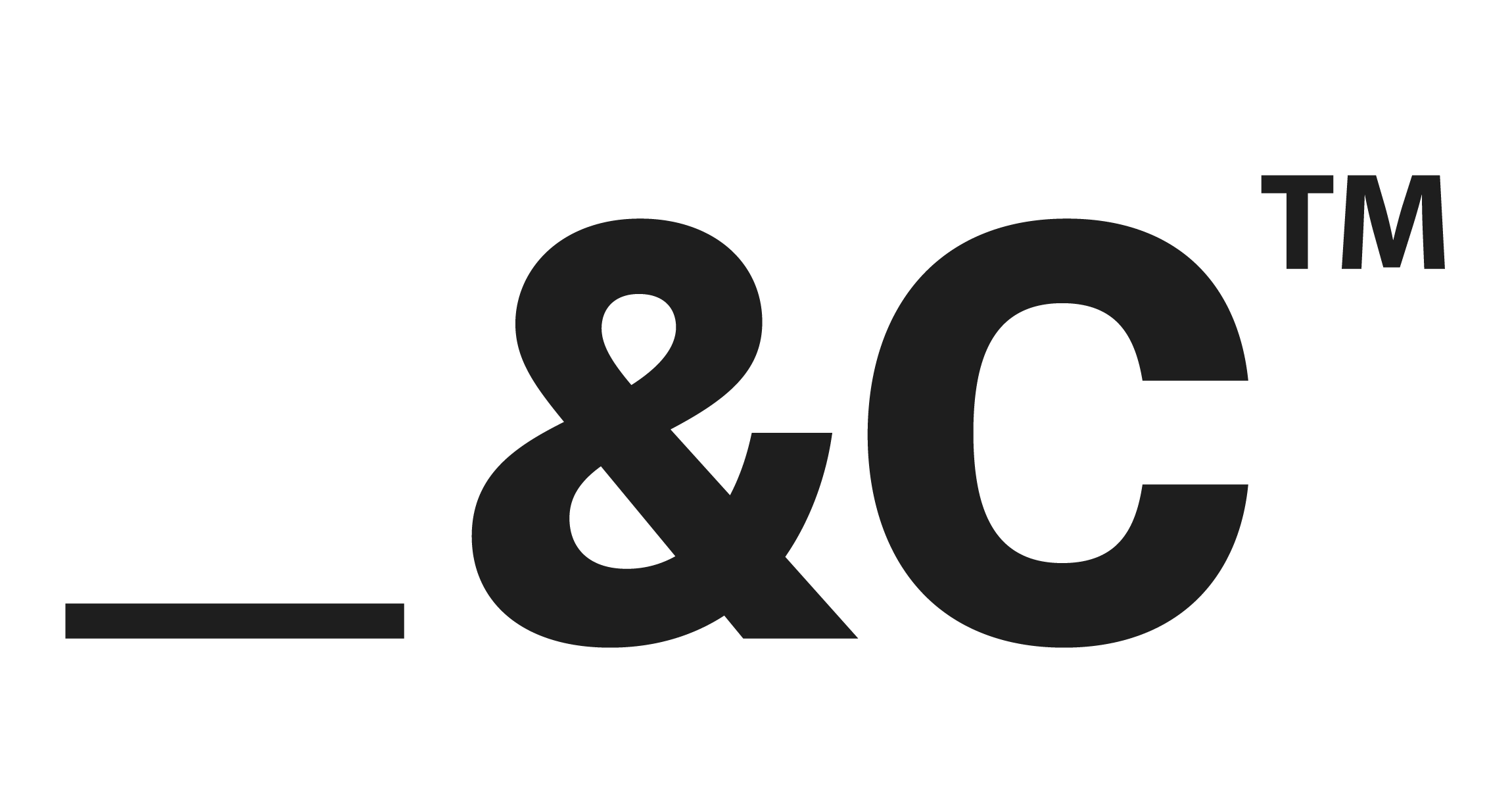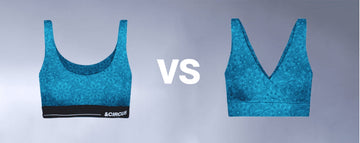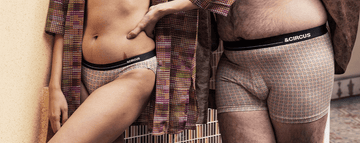Quick Listen:
In a bustling Mumbai boutique, racks of sleek, eco-friendly micromodal underwear catch the light, their tags proudly boasting certifications like GOTS and Fair Trade. These aren't just garments; they're a statement. Young Indian shoppers, scrolling through Instagram and TikTok, are increasingly drawn to brands that align with their values sustainability, ethics, and transparency. This isn't a fleeting trend. It's a seismic shift in how Gen Z and Millennials are reshaping fashion, particularly in the intimate apparel sector, where comfort and conscience now go hand in hand.
Uncomfortable underwear shouldn't steal your confidence. At Andcircus, we craft ultra-soft, sustainable Lenzing Modal Micro® innerwear for every body, XS to 5XL. From briefs to bras, our custom packs fit you perfectly. Shop risk-free with our 100% satisfaction guarantee and embrace comfort that includes everyone. #LoveEveryBody. Shop Now!
Sustainability: The New Fashion Imperative
The global push for sustainable fashion is no longer a niche movement. According to a Research Nester report, the sustainable fabrics market, valued at USD 36.43 billion in 2025, is projected to skyrocket to USD 161.63 billion by 2037, boasting a compound annual growth rate (CAGR) of over 13%. Asia Pacific, led by countries like India, is expected to contribute USD 59.64 billion to that figure, driven by a surge in eco-conscious consumer demand. Millennials and Gen Z, armed with awareness of textile production's environmental toll, are steering this transformation. They're not just buying underwear; they're investing in a future with less waste, lower carbon footprints, and fairer labor practices.
Why the sudden shift? It's not sudden at all. Years of exposés on fast fashion's water-intensive processes, chemical pollution, and exploitative supply chains have hit a nerve. Younger consumers, especially in India's urban centers, are voting with their wallets, favoring brands that prioritize eco-friendly materials like micromodal, bamboo, and TENCEL™ over synthetic polyester or conventional cotton.
The Rise of Green Fashion Consciousness
Walk into any D2C startup's online store in India, and you'll see it: micromodal men's briefs, bamboo maternity bras, recycled polyester shapewear. These materials aren't just buzzwords. Micromodal, derived from beechwood, offers buttery softness and breathability while using less water than cotton. Bamboo grows rapidly with minimal pesticides, and TENCEL™, a lyocell fiber, is biodegradable. According to Future Data Stats, the global sustainable fashion and textiles market, valued at USD 39.6 billion in 2023, is expected to reach USD 81.45 billion by 2030, growing at a CAGR of 9.6%. This growth is fueled by consumers who want their clothes down to their underwear to reflect a commitment to the planet.
Behavioral shifts are palpable. Gen Z, raised on climate change headlines, checks for eco-certifications before clicking “add to cart.” Millennials, now in their 30s and 40s, balance practicality with principle, seeking durable, comfortable innerwear that doesn't harm the environment. In India, where water scarcity and pollution are daily realities, the appeal of fabrics that reduce water usage or chemical runoff resonates deeply. As Market Research Future notes, the global sustainable fabrics market, worth USD 29.1 billion in 2023, is projected to hit USD 74.8 billion by 2032, with a CAGR of 12.50%, driven by demand for organic cotton and other eco-friendly materials, particularly in Asia-Pacific, which held a 45.80% market share in 2022.
Brands Leading the Charge
Indian innerwear brands are catching up fast. D2C labels like Bummer and Freecultr are weaving sustainability into their DNA, offering micromodal boxers and bras that promise comfort without compromise. These startups aren't just selling products; they're telling stories of ethical sourcing and low-impact production. Take Bummer, which uses biodegradable packaging and partners with local artisans to create vibrant, eco-friendly collections. Meanwhile, global giants like H&M Conscious and Uniqlo's AIRism line, which incorporate recycled fabrics, are inspiring Indian brands to innovate.
Social media amplifies these efforts. Influencers like Kusha Kapila and Dolly Singh have championed sustainable innerwear through Instagram Reels, showcasing how style and ethics can coexist. Campaigns like #WearYourValues, launched by Indian D2C brands, resonate with young audiences, who share unboxing videos of their eco-friendly hauls. These efforts aren't just marketing they're building communities around shared values, with hashtags racking up millions of views.
Challenges: The Cost of Going Green
But it's not all smooth sailing. Sustainable fabrics come with a hefty price tag. Producing micromodal or organic cotton requires investments in R&D, ethical certifications, and supply chain transparency, which can drive up costs. Smaller brands struggle to compete with fast-fashion giants that churn out cheap, synthetic alternatives. As BCC Research reports, the global sustainable fabrics market is expected to reach USD 27.8 billion by 2029, with a CAGR of 8.1% from 2024 to 2029. Yet, scaling these materials while keeping prices accessible remains a hurdle, especially in price-sensitive markets like India.
Supply chain complexities add another layer. Sourcing certified sustainable fibers often means relying on international suppliers, as local infrastructure lags. Certifications like OEKO-TEX or Fair Trade require rigorous audits, which can overwhelm small-scale manufacturers. Then there's greenwashing a term young consumers are quick to call out. Brands caught exaggerating their eco-credentials risk losing trust, as savvy shoppers demand transparency through blockchain-based traceability or detailed sourcing reports.
Opportunities: A Green Edge in a Crowded Market
Despite the challenges, sustainability is a golden opportunity for innerwear brands. Eco-friendly fabrics like micromodal offer tangible benefits: superior softness, moisture-wicking properties, and durability that synthetic fibers can't match. These qualities align perfectly with consumer demands for comfort and longevity. Brands that lean into sustainability also build loyalty. A 2023 survey by Future Data Stats found that 68% of Gen Z shoppers are willing to pay a premium for ethically produced clothing, including underwear.
Technology is a game-changer. AI-driven design tools optimize fabric use, reducing waste. Blockchain ensures supply chain transparency, letting consumers trace their boxers back to the beechwood forest. Indian startups are also exploring closed-loop production, where old garments are recycled into new ones. These innovations not only cut environmental impact but also lower long-term costs, making sustainability scalable.
A Greener Future for Innerwear
“Sustainability isn't a choice anymore it's a business imperative,” says a textile technologist at a leading Indian D2C brand. Experts predict that by 2030, sustainable innerwear will capture a significant chunk of India's apparel market, driven by urban youth and rising disposable incomes. To stay ahead, brands must localize sourcing think organic cotton from Gujarat or bamboo from Assam and tell authentic stories that resonate with skeptical consumers.
The numbers back this optimism. With the sustainable fabrics market poised to grow from USD 29.1 billion in 2023 to USD 74.8 billion by 2032, as per Market Research Future, and Asia-Pacific leading the charge, India's innerwear brands have a unique chance to shine. The path forward involves investing in R&D, embracing certifications, and leveraging social media to educate consumers. It's not just about selling underwear; it's about building a movement. For young Indians slipping into micromodal briefs or bamboo bras, each purchase is a small act of rebellion against a wasteful world a reminder that fashion, even the most intimate kind, can be a force for good.
Frequently Asked Questions
Why are sustainable fabrics becoming popular among young consumers in India?
Young Indian consumers, particularly Gen Z and Millennials, are increasingly prioritizing sustainability in fashion. Driven by environmental awareness and social media influence, they're choosing eco-friendly materials like micromodal, bamboo, and TENCEL™ for innerwear to reduce waste, water usage, and support ethical practices.
What types of sustainable fabrics are used in modern innerwear?
Popular sustainable fabrics include micromodal, bamboo, TENCEL™, and organic cotton. These materials offer softness, breathability, and lower environmental impact compared to synthetic options, making them ideal for daily wear and supportive of eco-conscious lifestyles.
What challenges do brands face in producing sustainable underwear?
Sustainable innerwear production involves higher costs due to ethical sourcing, certifications like GOTS or Fair Trade, and supply chain transparency. Small brands often struggle to scale while keeping prices competitive, especially in price-sensitive markets like India. However, innovations in AI design and blockchain tracking offer promising solutions.
Disclaimer: The above helpful resources content contains personal opinions and experiences. The information provided is for general knowledge and does not constitute professional advice.
You may also be interested in: How Gender-Neutral Innerwear Is Becoming a Norm, Not a Niche
Uncomfortable underwear shouldn't steal your confidence. At Andcircus, we craft ultra-soft, sustainable Lenzing Modal Micro® innerwear for every body, XS to 5XL. From briefs to bras, our custom packs fit you perfectly. Shop risk-free with our 100% satisfaction guarantee and embrace comfort that includes everyone. #LoveEveryBody. Shop Now!


















































